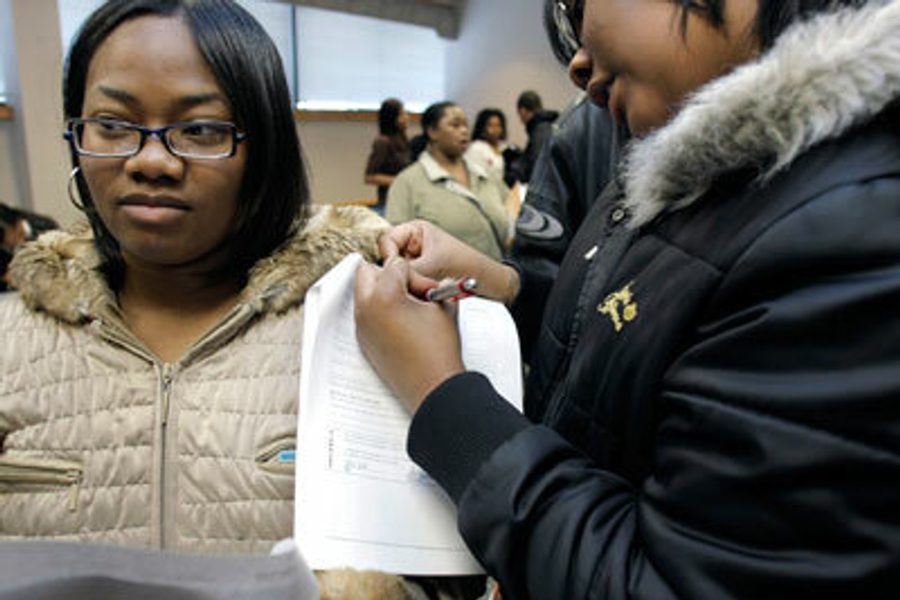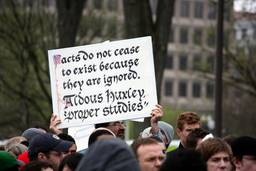
Unemployment over 20% for Hispanics, African Americans in some cities, and ‘jobless recovery’ doesn’t offer much hope
While economists wring their hands over the weak “recovery” underway, with new jobs in May mostly due to temporary Census hiring, an even starker crisis is playing out in urban areas across the country: There are near Depression-level unemployment rates for minorities in some metropolitan areas.
A new report, Uneven Pain, issued Wednesday by the liberal Economic Policy Institute, looks closely at the different unemployment rates for blacks, whites and Hispanics, based on 2009 data, and its findings are striking, as summed up by EPI: “Unemployment rates for nonwhite populations were particularly high in three cities: Providence had a Hispanic unemployment rate of 21.4% and Detroit and Minneapolis had African American unemployment rates of 20.9% and 20.4%, respectively.”
Currently, the May unemployment rate was nearly 10% overall, but there were striking differences among the races: whites at 8.8 percent; blacks at 15.5 percent; and Hispanics, 12.4 percent. Worse, roughly one in four blacks and Hispanics are under-employed—they don’t have the full-time jobs they want.
Algernon Austin, EPI’s Director of the Race, Ethnicity, and the Economy program, told In These Times, , “Even if we had relatively strong job growth, we would be facing high unemployment rates over the next three years. But if we have a jobless recovery, it’s a really frightening situation.”
And a jobless recovery — coupled with no interest from Democratic leaders or the White House in any major jobs creation programs — is set to doom an entire generation of minorities to even worse job prospects than they had before.
In fact, minority unemployment is roughly 150 percent higher than white unemployment, worsening an already weak economic situation that existed even before the recession officially started in December 2007.
But the troubling unemployment figures aren’t simply due to the relatively lower percentage of college-educated minorities or greater levels of poverty in the de-industrialized inner cities. In fact, the relatively prosperous and liberal metropolitan area of Minneapolis-St. Paul has three times the rate of black unemployment compared to whites.
The Minneapolis-based Jobs Now Coalition points out that in Minneapolis-St. Paul-Bloomington, the black unemployment rates is 20.4 percent. The unemployment rate for whites in the Minneapolis-St. Paul-Bloomington metro is 6.6 percent — well below the national average.
The advocacy group declared:
The report found that the unemployment gap holds even where black and white populations both are high school educated. In 2008 in the Minneapolis-St. Paul-Bloomington metro, African Americans with a high school diploma or GED were three times as likely to be unemployed as whites with the same level of education.“It’s generally assumed that the more educated a population, the lower their unemployment rate. But the disparity we are seeing here cannot be explained by the so-called achievement gap,” said Kris Jacobs, Executive Director of JOBS NOW Coalition, a St. Paul based statewide workforce policy coalition. “We are seeing equally-educated persons without equal rates of employment. We also know that people can only apply their job skills where jobs exist. We need jobs now, for all Minnesotans,” she said
But that’s not about to happen as Congress considers a scaled-down jobs bill that would create relatively few new jobs even if it passed in time to save benefits for the unemployed. Even the centrist New York Times columnist David Leonhardt concedes the Democrats won’t be pushing for massive jobs creation even as unemployment remains the top concern:
The Democrats find themselves in the position of heading into a midterm election campaign with the unemployment rate near 10 percent, knowing that they have not done everything in their power to bring it down.Publicly, Mr. Obama’s advisers reject this description. “Job creation and economic recovery were and remain President Obama’s top priority,” Lawrence Summers said recently. Mr. Obama is now lobbying the Senate to pass a larger jobs bill than the House passed two weeks ago and pushing for an energy bill that could also create jobs.
But when they are not speaking for quotation, some White House and Congressional officials acknowledge that they could have done more to stimulate the economy, and sooner. In part, they have been busy with other things: legislation on health care, finance and education that could shape the economy for decades to come. The bigger reason, though, is politics.
In the face of near-united Republican opposition, top Democrats have decided that the political costs of aggressively pushing for more stimulus are too high. Any new bill will help only on the margins, and it will give Republicans another chance to blame Mr. Obama for the deficit, even though the current deficit is more of their own party’s making.
The liberal Firedoglake is even more blunt about the unfolding unemployment disaster:
The months and months of effort put into a bill that won’t create much of anything in the way of jobs - more of a bill to stave off more disaster than anything - is a perfect model for a dysfunctional legislative system…
One of the biggest tragedies is the reversal of years of gains for the black middle-class in cities such as Memphis. As columnist Bob Herbert warns:
Entire communities are going under. A remarkable article in The Times last week detailed what has happened in Memphis, where a majority of the residents are black. It said the city epitomizes “how rising unemployment and growing foreclosures in the recession have combined to destroy black wealth and income and erase two decades of slow progress.”The median income of black homeowners in Memphis has dropped to a level below that of 1990.
It’s impossible to overstate the threat that this crisis of unemployment poses to the well-being of the United States. With so many people out of work and so much of the rest of the population deeply in debt, where is the spending going to come from to power a true economic recovery? The deficit hawks are forecasting Armageddon, but how is anyone going to get a handle on the federal deficits if we don’t get millions of people back to work and paying taxes?






